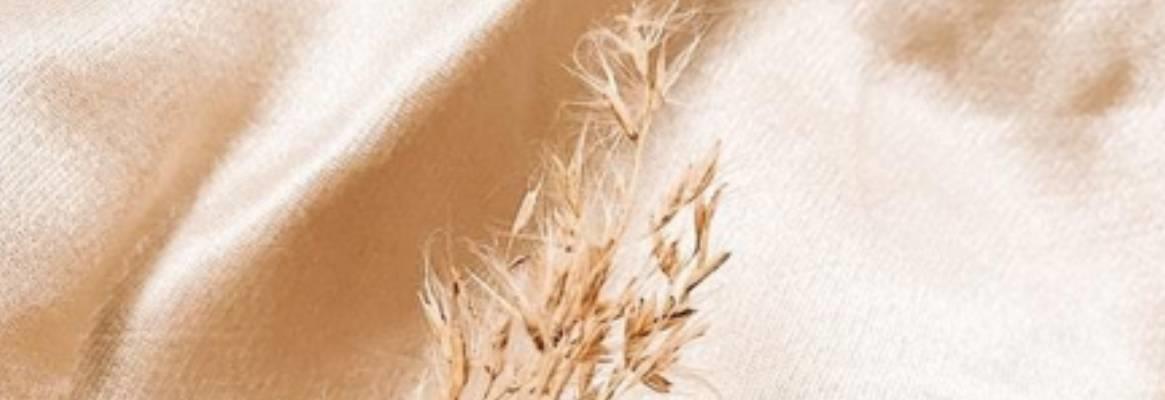According to a 2020 report, the global market for bed and bath linen is projected to come close to $100 billion by 2027, growing at a CAGR of 4.3 per cent. The highest demand is recorded in North America, China, and Canada. However, bed and bath isn’t the only application of linen that’s on the rise; linen is also making a comeback in the fashion industry, where more and more brands now use it as an alternative to cotton.
Powered by the global sustainability movement and the fashion trends that started during the pandemic, linen is having a big moment, becoming more than the occasional luxury edit.
That may sound surprising – after all, most people are used to seeing cotton as the go-to fabric for basic clothing, while linen is the occasional luxurious treat. However, the history of linen goes back farther than you might think. Linen textiles are some of the oldest in the world, going back to 36,000 years ago. In ancient Egypt, linen was used for mummification, while in ancient Mesopotamia, it was a luxury fabric reserved for the wealthy. In Europe, the oldest traces of linen were found in Switzerland, dating from around 8000 BC. In some ancient cultures, linen was even used as currency.
Linen was consistently used throughout history until the 1970s when the fashion industry switched to fabrics that were cheaper to mass produce; at the end of the 70s, just 5 per cent of the global linen production was used for fashion fabrics. Now, things are slowly beginning to change, and the fashion industry seems to rediscover the benefits of linen.
Fashion labels are starting to love linen
If you think that linen clothing is easier to find, you’re not imagining things. In the past couple of years, more and more fashion labels, including big ones, have come out with linen edits. According to Tagwalk data, the use of linen in SS21 collections increased by 102 per cent. 64 per cent of the brands that included linen in SS2021 collections used it for the first time, and 28 per cent of them were large brands like Dior, Fendi, Maison Margiela, and Louis Vuitton. In 2021, half of designers had at least one linen look in their collection, versus just 12.5 per cent in 2020.
Linen was huge in 2021 and, considering that designers like Fendi and Margiela now list it as an individual segment on their websites, it’s safe to say that linen is here to stay. Of course, smaller indie brands have been selling linen clothing for years now, but linen’s permanent place in the collections of high-end designers is huge because these designers have a lot of traction and will encourage other brands to do the same.
Let’s have a look at the factors behind the transition.
The first and most important driver behind linen demand is, without a doubt, sustainability. Notorious for the dangerous waste it produces, the fashion industry is starting to move away from unethical and harmful practices, especially now, in the wake of the pandemic. COVID-19 had a massive impact on sustainability in fashion: spending most of the time at home, consumers bought 25 per cent fewer clothes, and, when they did, they chose sustainable options. And when it comes to sustainability, linen is the clear winner.
Linen is more sustainable than organic cotton. It comes from the flax seed, a regenerative plant that enriches the soil and whose harvesting produces very little waste. Flax doesn’t require as many pesticides, herbicides, and fungicides as cotton, and in the production of organic linen, these polluting substances are eliminated completely. Thanks to its resilience, flax can also grow in poor soil, and according to the European Confederation of flax and hemp, one linen shirt only uses 6.4 litres of water, which is much less than a cotton shirt which uses, on average, 26 litres. That’s because flax thrives in temperate climates, and, unlike cotton, it doesn’t need more than the usual rainfall.
In the Sustainable Apparel Coalition’s Higg Materials Sustainability Index, linen has a score of 22.2, whereas cotton and polyester have a score of 9.1 and 1.5, respectively.
Apart from requiring fewer pesticides and no irrigation, linen is also more sustainable because it lasts longer. Linen garments are indeed more expensive than cotton ones, but they’re much more durable, and they look better with every use. Linen is an anti-bacterial fabric, which makes it perfect to wear in summer, but that also means you have to wash it less often – so less water is consumed there, too.
There are no microplastics involved in linen production since it’s an all-natural fabric. It’s also worth pointing out that 85 per cent of the global linen production is done in Northern Europe, which is good news for European fashion labels, who don’t have to spend as much to source linen.
Sustainability alone is enough to justify linen’s growing popularity, but we also shouldn’t forget that this fabric is also extremely comfortable – and comfort matters a lot, especially after consumers’ post-pandemic love for loungewear. Anyone who’s ever worn a linen garment can say that it feels very pleasant on the skin, especially in summer, thanks to its cooling effect. From this point of view, we can say that the fashion industry is finally giving consumers what they want and rediscovering why linen passed the test of time so well.








Comments